Star Station Hope. Watchtower.
In another ‘From the Watchtower’ post we look at Star Station Hope, known as Watchtower. It forms the centre of the Watchtower Universe stories and of course in-universe serves as the central hub of commerce, politics and Federation control in the difficult region of space. Star Stations are the Border Patrol Service versions of Space Stations but have a focused purpose on serving the Border Patrol remit of maintaining, policing and protecting borders. Star Station Hope serves a region of space that borders on Tzenkethi space, Cardassian space, free borderlands and near to Breen space and an emerging border with the Klingons.

‘Dynamite’ Tanner
Commanded by Commodore Tekesha Nancy Tanner – TNT or Dynamite Tanner as she’s fondly (or not so fondly called), the station operates as a commercial hub, a thoroughfare of civilian traffic and a cauldron of diplomatic troubles. It is the home base for the Sixth Cutter Squadron of the Border Patrol known as the ‘Sassy Sixth’ or as Tanner’s ‘Hell Hounds’. The station and the sector resources begin to have a part to say in the Cardassian relief measures post Dominion War.
The station is a virtual citadel. A stronghold for defence and offence. Tactically situated on a difficult stretch of Federation borders, it’s primed to be the front and last line of defence. This was perhaps best demonstrated during the Dominion War with acting as an operations centre for various Starfleet fleets and of course orchestrating the Border Patrol’s defence of the borders at that time. Tragically, the entrance into the War by the Breen wrongfooted many within Command, not least of which included the crew and personnel of Hope who were ambushed in a pre-emptive strike designed to stop the station acting as a signal to the Breen attack on Earth. The station was badly damaged and lost many lives that day.
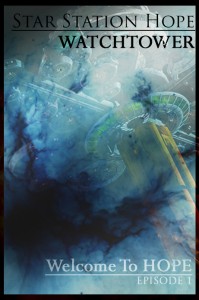 Apart from its role as a centre of military might, Hope acts as a diplomatic centre. The diplomatic relations often reflected the fractured and fractious relations within the region. Especially now in the tense post-War days, with measures of Cardassian relief met with openly hostile reactions, whilst overtures by the Breen are met with suspicion and fear. Amidst this all, there are the age old hatreds and lines of drawn blood between Cardassian and Bajroan, Klingon and Romulan and the ever lurking threat from the Tzenkethi Autocracy and the marauding Kzinti clans.
Apart from its role as a centre of military might, Hope acts as a diplomatic centre. The diplomatic relations often reflected the fractured and fractious relations within the region. Especially now in the tense post-War days, with measures of Cardassian relief met with openly hostile reactions, whilst overtures by the Breen are met with suspicion and fear. Amidst this all, there are the age old hatreds and lines of drawn blood between Cardassian and Bajroan, Klingon and Romulan and the ever lurking threat from the Tzenkethi Autocracy and the marauding Kzinti clans.
Star Station Hope is also a home for many civilians and for many of the cutter personnel. It’s a place of hospitality, rest, business and opportunity. That makes it a place of romance, family and business. Loves, lives and lies.
The cast of Watchtower:
Given the in-universe scope of the Watchtower series, Hope Station’s size and the interchangeable nature of personnel within the Border Service, the sheer number of possible characters and crossovers is potentially staggering. We will for example see characters from Osprey and The Aegolius Harrier appear on the station and the implications of their stories having a direct impact.
From the outset, I do want to create a sense of a massive station in space, however, story telling can sometimes dictate the number of characters and the level of attention characters can receive. In this first episode of Star Station Hope: Welcome to Hope we get introduced a host of characters, many of whom are destined to play a larger role in the story and stories to come. Since the intention is to explore the political angles and wider scale stories affecting my Watchtowerverse, many of the depicted characters are top tier officers serving Watchtower. Likewise, many others will be diplomats or ambassadors for other nations to bring political drama to the stories and conflict in personalities, ambitions and politics. However, it wouldn’t be a Miranda Fave story without a smattering of lower decks characters populating the story. Additionally, given the static setting of Hope Station and emulating Deep Space Nine, there are also civilians featuring as characters within the story. For that reason, you’ll see The Rhapsody Rabbit Gavilán and the Étoile Cheval show up at some juncture too on the station.
The setting will allow for the exploration of family members of characters an interesting and new facet for me to explore and play with. Central to Hope Station’s story is the family of Captain Paul Hanna, the commanding officer of the station with overall concern to do with the station, leaving command of the sector and the cutter squadron to Tekesha Tanner. Paul’s family is returning to Hope Station following the trauma of the Dominion War. Hanna’s fractious marriage difficulties will parallel the difficulty of fostering peace with the ambassadors of the Alpha and Beta Quadrants.
List of characters:
Border Patrol Service Personnel
Command staff
-
Commodore Tekesha Nancy Tanner- commanding officer Star Station Hope, Sixth Cutter Squadron and Watchtower Sector XXX 954
-
Captain Paul Graham – command duties Star Station Hope (second in command)
-
Commander Catherine Reddick – Operations
-
Parkash – CMO Hope Station (Grazerite)
-
Lt. Commander Jari Hakim – station chief of security
-
Lt. Commander Lori Taftner – flight operations deck commander and Valkryie squadron pilot leader; CAG (Betazoid)
-
Commander Grem’waal – Intelligence officer – (Lyrafi)
-
Commander Takeish Rong – director sector operational control (Arkenite)
-
Lt. Petra Azimuth – senior security chief | tactical officer | intelligence officer (Vulcan/Romulan)
-
Commander Kazan – navigational control sector – navigation – communications network (Zaldan)
-
Lt. Commander Naanthiel’thbek – Docking Harbour Control (Andorian)
-
Chief Eli Gordon
-
Lt. Yara – Commodore’s aide (Vulcan)
Crew
-
Mister Hujgh – a flight deck officer
-
Pettty officer Gorgon – docking control (Ariolo)
-
Ensign BeCa Sweee – (Saurian)
-
Ensign Jackson Jon Deleaney – diplomatic corp
-
Engineering technicians Darren and Warren
-
Security officer – Gabrielle Santiago
-
Security officer – Tobias O’Conner – troubled officer
-
Security officer – Meglar
-
Security officer – Quint – a security team leader
-
Security officer – Rari Akbar – Ensign – Betazoid
-
Security officer – Graga – Chief Petty Officer (Skorr)
-
Chief Meeare Ashap – shipyard refit chief (Caitian)
Diplomatic representatives:
-
Ambassador Leyun (Vulcan) – Federation Ambassador
-
Minister Jukhem – Cardassian minister
-
Mr Riv – Tellarite homeworld representative – male
-
Ambassador Ter’yon – Romulan – female
-
Ambassador K’Taya – Klingon – female
-
Representative Hilix – Ariolo – female
-
Ambassador Anaik – Rigelian – female
-
Ambassador Drviex – Gorn – male
-
Vedek Mithras Rooun – Bajoran
-
‘Ambassador’ Braga – Tzenkethi
Civilians:
-
Teresa Graham
-
Madison Graham
-
Tyren Graham
-
Estefenia Santiago – restaurateur – mother to security officer Gabrielle Santiago
-
Mizzur – holosuite | casino | bar owner (Bolian)
-
Gerr
Star Station Hope – levels
A diagram below shows a Regula class station. Star Station Hope is the TNG era much larger Starbase type size, with 39 decks and staffed by 5,700 crew and housing up to 4-5,000 civilians and passing traffic. The station acts as the refit yard for the Sixth Cutter Squadron and to repair stricken vessels and therefore is surrounded by a number of space hangers.
Operational and Sector Control: The Hub
The central command and control centre of Star Station Hope. A massive encompassing circular command centre, it controls station operations and direct sector control for the entire Sixth Cutter Squadron.
Operations are divided between station based departments and Sector Control departments. In the centre is the Executive Hub tier, a raised circular platform, surrounded by banks of consoles and holographic interfaces.
“Command and control is separated into two main areas.” The operations ensign continued as she pointed to the left hand side of Central Ops. The floor plan was honeycombed with blocks of computer banks arranged into adjoining hexagonal cells staffed by teams of personnel. To the ‘front’ was a large wall of viewscreens. One acted like the traditional viewscreen on a starship, the others made up the Primary Station Status Control, dominated by a large schematic displaying in real time the station’s status, much like a master systems display screen would on starship bridges.
Swwee’s confidence grew as she turned to the details of the station’s operations. “This side is known as the Pit, in other words, Star Station Ops. Here we have environmental controls, internal security, engineering, life support, traffic and docking control, communications, etc. All matters pertaining to day to day life aboard the station.”
“Here on this side, we have Sector Control. We call it the Bullpen. From here the station co-ordinates, logs and dictates matters across the sector. That duty involves surveillance of the borders, gathering intel, co-ordinating and tracking traffic in the sector, planetary bodies, communications, sensors and sector security/defence, task and direct the 6th cutter squadron and liaise with Border Patrol central command.”
“Everything is co-ordinated through the Hub. However, in addition to the CnC we also have the war room for defence and security of the sector matters. There are of course the substations of all of the CnC stations. An expansive Operations centre, which will be your next port of call on this tour, as well as the communications centre, a dedicated suite to the subspace communications network, Space dock, Space dock engineering, Main Engineering, and the refit yard. We also have the Fabrication and Manufacturing yards as well as a cargo master and a harbour master.”
“In other words, it is a busy place.”
BeCa Swee giving new CAG Lori Taftner a tour of the Hub
Master Systems Display: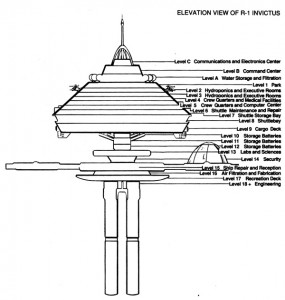
Deck plan: Levels consist often of tiers of decks given the size and scope of Star Station Hope
-
Level A: The Hub
- Command and Control, Commodore’s Office, Briefing Room, Executive Officer’s Office, Sector Control Conference Room, Tactical Situation Ops
-
Level B
- Junior and Senior Officers’ Quarters, VIP/Guest Command Officers’ Quarters, Holosuite 1, VIP Dining Room, Main Communications Array, Operations sub-control, Engineering sub-control, Auxiliary control, Emergency transporter room, Executive shuttle bay.
-
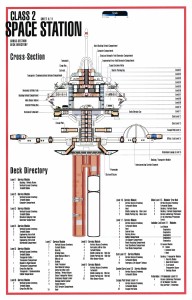 Level C
Level C- Officers’ Quarters, Officers’ Mess, Holosuites 1, 2 & 3, Upper Impulse Assembly, Main Shield Generators
- NCO Quarters, Enlisted Crew Mess, Galley, Lower Impulse Assembly, Fusion Reactors 1-4, Impulse Engines, Transporter Room Suites 1
-
Level D
- Main Phaser and Fire Control, Auxiliary Control Room and Support, Engineering Support, Deuterium Storage, Fusion Reactors 5-8, Impulse Engines
- Primary Life Support Systems, Primary Computer Core Control, Holodecks 1 and 2, Deuterium Feed Conduits, Deuterium Injectors
-
Level E
- Cargo Bays 1 & 2, Cargo Transporters 1 & 2, Auxiliary Sickbay, Deuterium Feed Conduits
- Docking Control Complex, Inner Docking Control, Outer Docking Control, Navigational Computer Suite, Bay Door operational controls,
- Upper Tiers of Inner Docking Bay and Landing Docks. Reserved for Starfleet and Border Patrol vessels
- Flight-deck, Flight-deck control, Flight-deck prep offices, Flight-deck mess, Flight-deck launch
-
Level F
- Cargo Bays 3 & 4, Cargo Transporters 3 & 4, Sickbay, Chief Medical Officer’s Office, Primary Science Labs, Counsellor’s Office, Main Computer Cores P/S (Level 1), Deuterium Feed Conduits
- Main Computer Cores P/S (Level 2), Junior Officers and Crew Quarters, Main Lounge, Secondary Science Labs, Deuterium Feed Conduits, Lateral Sensors
- Main Sensor Array, Interconnecting Dorsal/Intermix Shaft/Turbolifts, Armoury, Holding Cells, Chief Tactical Officer’s Office, Deuterium Feed Conduits, Secondary Sensor Array
- Brig, Transporter Suite 2 & 3, Interconnecting Dorsal/Intermix Shaft/Turbolifts, Deuterium Storage
- Middle Tiers of Inner Docking Bay and Landing Docks. Commercial and cargo freight vessels, Custom controls
- Secondary Flight-deck, Lower Flight-deck control, Pilot mess and training rooms, On-call suite, Secondary Flight-deck launch
-
Level G
- Lower Tiers of Inner Docking Bay and Landing Docks. Reserved for Civilian craft and vessels (various sizes), specially reserved diplomatic bays, Customs Controls, Embassy offices
-
Level H: First true civilian level
- Secondary Shuttlebay (Upper), Auxiliary Craft Maintenance 1, Cargo Bays 3-6, Cargo Transporter 3, Upper Engineering Support Area, Machine Shop, Deuterium Storage, Nacelle Power Transfer Assembly
- Main Promenade, Civilian Quarters (and Officer Quarters with family suites), Restaurants, Main Visitors’ Centre, Library,
-
Level I
- Secondary Shuttlebay (Lower), Main Engineering, M/ARA Reaction Assembly, Transporter Suites 5 (civilian operations designated), Cargo Transporter 4, Nacelle Power Transfer Assembly, Nacelle Personnel Conduit
- Main Shuttlebay (Middle), Deflector Control, Main Navigational deflector, Primary and Emergency Deflector Dish Graviton Polarity Generators, Subspace Field Distortion Generators
- Living Quarters, Primary Systems Support Compartment, Secondary Computer Core (Level 1), Emergency Batteries, Enlisted Quarters, Secondary Communications Array
- Forward Torpedo Launchers, Torpedo Magazines, Cargo Bays 7-9, Cargo Transporter 5, Aft Tractor Emitter, Secondary Computer Core (Level 2), Reserve Deuterium Storage
- Main Shuttlebay (Upper), Stellar Cartography, Enlisted Quarters, Recreation Deck/Zero-G Gymnasium, Crew Lounge
- Main Shuttlebay (Middle), Deflector Control, Main Navigational deflector, Primary and Emergency Deflector Dish Graviton Polarity Generators, Subspace Field Distortion Generators
- Main Shuttlebay (Lower), Shuttle Maintenance 2, Shuttle Storage, Cargo Transporter 6, Living Quarters Maintenance Bay 2, Living Quarters, Tertiary Multi-purpose Laboratories, Emergency Transporter Rooms 3 & 4
- Diplomatic suites, Diplomatic conference rooms
-
Level J
- Observation lounges, ‘Pod’ arteries – main thoroughfares to attached pods, Arboretum, Botanical and Zoology Labs, Aquarium, Stellar Observatory Control, Stellar Cartography Suite Complex, Science Labs (Starfleet and commercial)
- Auxiliary Deflector Control, Aft Phaser and Torpedo Weapon Control, Aft Torpedo Launcher, Torpedo Magazine, Antimatter Injectors, Secondary Computer Core (Level 3), Gravimetric Polaron Generators
- Maintenance Bay 1, Emergency Transporter Rooms, Enlisted Quarters
-
Level K
- Myriad of cargo holds and tanks accessed via specialised turbolifts and outer doors by work bee and shuttle
-
Sub Deck A
- Emergency Fusion Power Generators 1 & 2, Environmental System Controls, Waste Reclamation, Secondary Shield Generators, ‘The Dregs’ illegal bar
-
Sub Deck B
- Emergency Fusion Power Generators 3 & 4, Emergency Batteries, Antimatter Storage Tanks, Antimatter Fill Port, Emergency Gravimetric Polaron Generators, Antimatter Generator, Tractor beam Generator, Main Tractor Beam Assembly
Looking forward to telling the tales featuring this new and exciting addition and a central plank to the Watchtower Universe. Thanks for reading. Boldly Writing, Boldly Reading.![]()
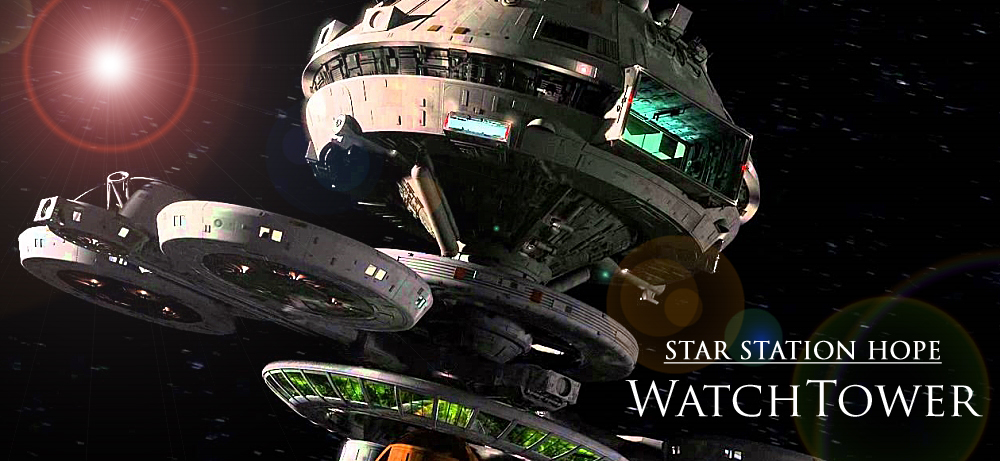
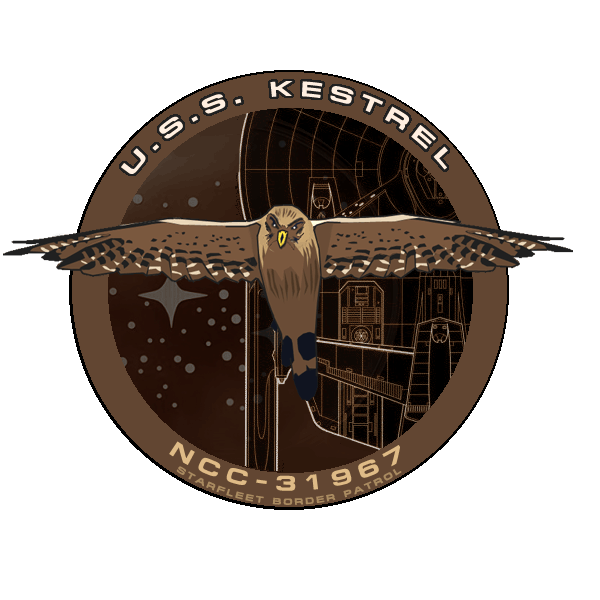
Recent Comments